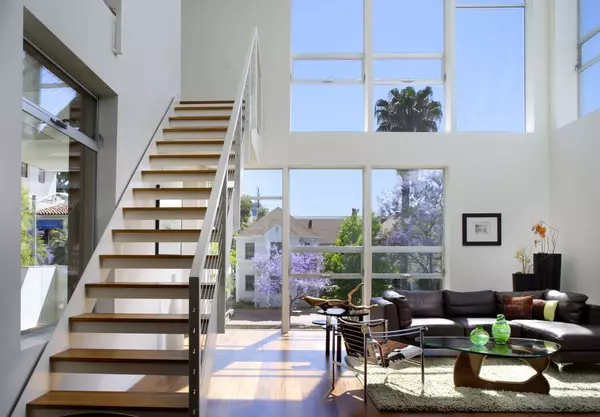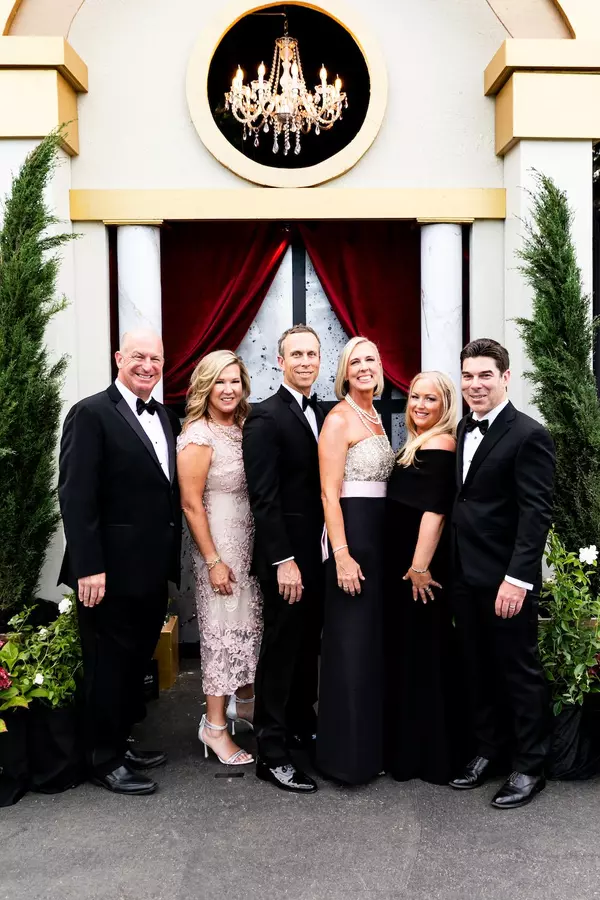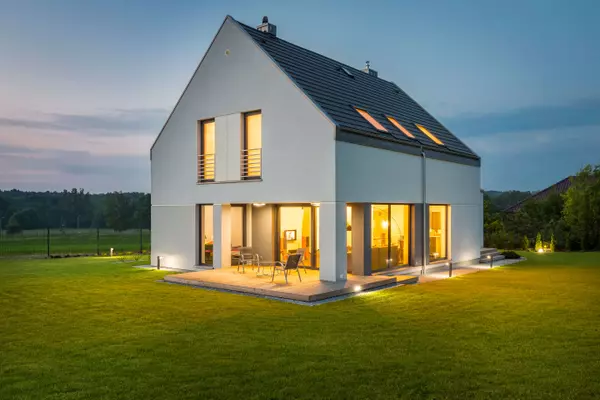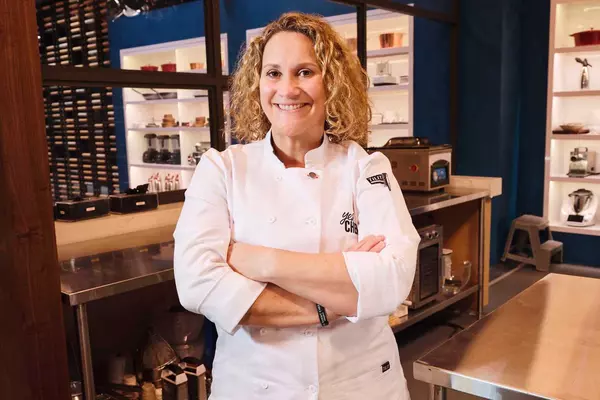New vision for San Diego’s Civic Center strives for renaissance of downtown
Looking to engineer a renaissance of downtown San Diego’s core, a well-heeled philanthropic organization and its partners are going public with an ambitious vision for six blocks of city-owned real estate that they believe community leaders can rally around.
Tuesday, Philadelphia-based real estate consulting and urban planning firm U3 Advisors released a conceptual plan for the city’s real estate centered around an arts and educational hub that spills onto a world-class public space, thousands of residential units spread across multiple high-rises, shops and restaurants, and a hotel.
The work, commissioned by San Diego’s Prebys Foundation more than a year ago and facilitated by the Downtown San Diego Partnership, comes as dreams of imminent redevelopment appear contemporaneously buried beneath the city’s budget woes.
But the vision is meant to exist outside the financial constraints of the moment, creating momentum to shift political will and fuel private investment.
“The obvious solutions have been staring us in the eye for a while,” said Omar Blaik, CEO of U3 Advisors. “The question was not, what should be done? The question is, how do we actually get it done? My sense is that we’ve finally arrived at a set of uses and a set of partners that can really bring the Civic Center back to be the heart of San Diego.”
The Civic Center complex is bounded by A Street and C Street to the north and south, and First Avenue and Third Avenue to the east and west. The four-block area features the City Administration Building (aka City Hall), which was built in 1965 and is home to the mayor’s office, city clerk’s office, council member offices and council chambers. The quad also includes the Civic Center Plaza office tower, Golden Hall, a public plaza, the Evan V. Jones Parkade parking garage and the 3,000-seat Civic Theatre.
The city’s real estate holdings extend across the street to a fifth block at 1222 First Ave., which is home to the City Operations Building (or COB). The city also owns the adjacent block at 101 Ash St.
Most of the land was, until six months ago, expected to be made available for sale or lease, for a second time, as part of Mayor Todd Gloria’s effort to secure a new City Hall facility for government workers. The first offering fizzled because of a lack of interest. The mayor then killed off the plan to put the properties back on the market in December in light of a large, looming budget deficit. The city, he said at the time, would not only stay put but also move more people into the complex, even though some of its buildings have been described as being beyond repair.
The change in circumstances would seem to have rendered U3’s work moot. But the urban planning firm believes its vision is sufficiently flexible enough to accommodate the city’s needs, especially given the anticipated years-long lead time required to pool together funds.
U3 is recommending a phased approach that begins with the only unused property on the quad: the Golden Hall parcel. The idea is to demolish the now-vacant building and redevelop the block as a cultural hub, meaning an arts and education center anchored by a new theater and enhanced by space for educational institutions.
The consultant believes the new performing arts center, likely with a price tag in the hundreds of millions of dollars, could be paid for through public subsidies, fundraising — namely donations from generous Civic Theatre patrons — and contributions from partner organizations. The San Diego Community College District is, for instance, interested in establishing a presence within the cultural hub.

Once Golden Hall is removed, B Street could be reconnected to First Avenue, allowing for an enlarged and enlivened pedestrian thoroughfare with a much enhanced public plaza. Here Blaik envisions a storied civic space that can host the city’s Christmas tree, a holiday market, an ice rink and other food-and-beverage-related activations that draw large crowds.
This part of the vision also leans heavily on public money — albeit preferably not at the expense of the city’s general fund. That’s because there’s not enough revenue attached to future uses to warrant developer interest.
“At the county and the state level, we need to really be bold, and we need to go and talk about the future of Southern California, the future of San Diego, its importance within the state. That, we hope, can garner public support and public funding,” Blaik said. “In projects that don’t pencil out like this, it’s a capital stack that is going to have every tool of subsidy that you can imagine, we just need to layer it on until we get to a place where we can justify the cost of the project.”
The public and partner contributions would, however, ultimately increase the value of the city’s surrounding real estate, he said.
“When we (started), the (city’s) motivation was to monetize the public land and the public assets, and to figure out City Hall elsewhere,” Blaik said. “What we came to (learn) is that the land value is negative. You cannot really be talking about monetization when you have created such a poor quality of an urban condition that nobody wants to invest around you. So the only way we are going to create value is by making an investment that transforms the place.”
Once the cultural hub and public plaza are established, the city can shift back to soliciting private industry interest in its land, as it becomes available. The next site would be the existing Civic Theatre footprint, where U3 is recommending ground-floor retail and residential towers that cater to specialized tenants, such as students, teachers and artists.
And, should the city eventually find a new administrative home or consolidate its people into one building, City Hall could be redeveloped with a hotel and more street-level storefronts.
In the final phase laid out in U3’s vision, the Civic Center Plaza office building and the Parkade would be replaced with even more residential towers alongside ground-floor shops and attractions.
While the consultant’s vision concentrates on the four Civic Center blocks, U3 sees the other blocks at 101 Ash St. and 1222 First Ave. as outside pieces that the city can tackle individually to introduce more housing. Currently, the city is in talks with a development team to convert the empty Ash Street office tower into hundreds of subsidized apartments.

With the vision work done, the Prebys Foundation is putting some of its muscle — and money — behind ensuring that the big ideas advance beyond pretty pictures, even if specifics on what’s next are squishy.
“I would say, under circumstances like we’re dealing with now, it’s more art than science,” Grant Oliphant, CEO of the Prebys Foundation, told the Union-Tribune.
“The approach we are taking is to say, a lot of people … have contributed a lot of thought about what they think ought to happen on this site, and that produces a certain kind of vision. We’re at the stage of saying this is really the vision that our community is talking about, and having it hopefully be inspiring enough that it guides the next 20 years of implementation,” he said. “Now the conversation begins in earnest about which pieces happen first and how to pay for them.”
To date, the philanthropic organization has given $592,678.64 in grant funding to the Downtown Partnership, which is administering the contract with U3.
The foundation gave the vision a platform at its inaugural, invite-only WAVES Festival, where Blaik on Tuesday formally unveiled the Civic Center plan. What’s more, the Prebys Foundation is now a permanent neighbor to the site having just purchased the 24-story office building at 401 B St.
And, going forward, the nonprofit will continue to pick up the open tab for facilitation and design work related to the Civic Center project, Oliphant said.
“We got into this because we believe in the importance of downtowns, and because we believe this is a real catalyst for answering this big fundamental question about what our downtown is for in the post-COVID, remote-work era,” he said. “The pieces and parts always look almost impossible at the beginning, but one thing I am really certain of is that it is never the right time for mediocrity. … Our entire interest is helping the community do something great with this space.”
The Downtown Partnership, which has been a driving force behind the scenes, will take the lead to carry out the vision.
“It’s very central to the success of our entire downtown that this area thrives, and obviously it’s not really thriving at the moment,” said Betsy Brennan, who runs the nonprofit business association. “(The U3 work) is a visionary document that can now go into the phase of implementation, which is maybe something that hasn’t always been San Diego’s strong point. You can have these wonderful visionary documents or renderings, and then maybe they end there, but at the Downtown San Diego Partnership, we are committed to action and implementation, and that’s the phase we’re entering now.”
With that in mind, the organization will formally take the conceptual vision to City Council in July. At the same meeting, city staff will ask council members to initiate the process to make the City Operations Building block available for redevelopment, under the Surplus Lands Act, Brennan said.
The Downtown Partnership is also tasked with energizing the current concourse through interim activations, such as hosting pop-up events and storefronts, and adding interactive art installations, although timing depends on funding.
Categories
Recent Posts










GET MORE INFORMATION
Agent | License ID: 02118739

